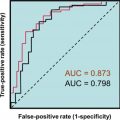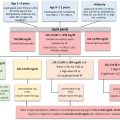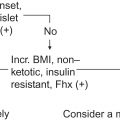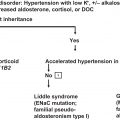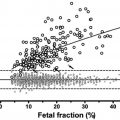Introduction
The distinction between gender, a psychosocial identity rooted in masculinity and/or femininity, and sex assigned at birth, or the appearance of male versus female reproductive organs defined by chromosomal makeup, is often overlooked. Instead, society (and healthcare) commonly assumes that sex assigned at birth is synonymous with gender identity. Such overgeneralization requires clarification. The purpose of this chapter is to introduce the concept of gender incongruence and to describe the basic physiology related to medical management of hormonal gender transition. Additionally, overall healthcare concerns for transgender people will be discussed.
A cisgender person will experience sex/gender congruence ( Table 17.1 ) . Cisgender men are assigned male at birth based on the visual appearance of the genitalia and have a male gender identity; cisgender women are assigned female at birth and have a female gender identity. When there are ambiguous genitalia or suspicions of a disorder of sexual development (see Chapter 5 : Endocrine Disorders of the Reproductive System), a karyotype is performed and the presence or absence of a healthy Y chromosome will assist in defining the sex as male or female, respectively .
| Term | Definition |
|---|---|
| Cisgender | A person who has only experienced sex/gender congruence |
| Transgender | A person who identifies with a gender different from their sex assigned at birth |
| Transgender man | A person who was assigned female at birth and identifies with a male gender |
| Transgender woman | A person who was assigned male at birth and identifies with a female gender |
| Difference of sexual development | A chromosomal or developmental defect that leads to ambiguous genitalia and/or infertility |
| Gender congruence | A gender identity that matches sex assigned at birth |
| Gender incongruence | A gender identity that is inconsistent with sex assigned at birth |
| Gender dysphoria | Extreme anxiety or distress that can occur when affirmed gender is repressed; pathological consequence of repressed gender incongruence |
| Nonbinary | Identifying somewhere within the gender spectrum; identifying with neither or both male and/or female |
| Trans-feminine | Existing on the feminine spectrum; usually assigned male at birth and not identifying with a masculine gender. Transgender women are trans-feminine, but not all people who identify as trans-feminine identify as women |
| Trans-masculine | Existing on the masculine spectrum; usually assigned female at birth and not identifying with a feminine gender. Transgender men are trans-feminine, but not all people who identify as trans-masculine will identify as men |
| Transition | The social and medical steps a gender-nonconforming person takes to affirm their gender identity |
| “Top” surgery | Surgeries associated with the enhancement or removal of breasts |
| “Bottom” surgery | Surgeries associated with the creation or removal of reproductive organs |
| Chest reconstruction | Removal of breast tissue to reconstruct a feminine chest into a masculine chest |
| Breast implants | Silicone or fat implants into the chest to create larger breasts and to feminize the chest |
| Orchiectomy | Surgical removal of the testes |
| Vaginoplasty | Surgical creation of a vagina from the trans-feminine person’s penile and/or intestinal tissues |
| Metoidioplasty | A phallus created from the clitoris and surrounding tissue |
| Phalloplasty | Surgical creation of a penis using tissue removed from the forearm or thigh |
| Hysterectomy | Surgical removal of the uterus with or without removal of the cervix |
| Oophorectomy | Surgical removal of the ovaries |
A transgender individual will experience sex/gender incongruence ( Table 17.1 ) . Transgender men were assigned female at birth and have a male gender identity. Transgender women were assigned male at birth and have a female gender identity. There are also people who identify as nonbinary, trans-masculine, or trans-feminine. Nonbinary people identify with neither or both male and female genders; trans-masculine and trans-feminine people identify on the masculinity or femininity spectrums, respectively. Historically, when a transgender person presented for transition-related medical care the provider would order a karyotype before initiating hormone therapy. A 2013 report documented that the incidence of chromosomal abnormalities in transgender people is similar to that of the general population and because of the rarities, a karyotype should not be ordered as routine practice . This is a major distinction between a disorder of sexual development, which includes a specific diagnosis that creates ambiguous genitalia, and the transgender state of being, which is a condition for which the etiology is not understood.
Transgender people presenting for care may or may not be suffering from gender dysphoria, or the distress associated with someone’s birth sex being different from their true gender identity, as defined by the Diagnostic and Statistical Manual of Mental Illness, Fifth Revision (DSM-V) ( Table 17.1 ). The World Health Organization has proposed defining gender incongruence in the International Classification of Diseases 11th Revision (ICD-11) . Gender incongruence is defined as the state of having a mismatch between one’s current gender identity and sex assigned at birth. Importantly, this diagnosis does not require a person to experience distress as a result of their gender, but still warrants gender transition, including hormone therapy.
Gender transition is the process a transgender person will undergo to affirm their gender . Socially, this can include name changes, preference for specific pronouns, and clothing and/or hairstyle changes. Many transgender people with access to healthcare services will also choose to medically transition. Testosterone or estrogen hormone therapy is the standard of care for affirming gender in transgender individuals; gender-affirming surgeries are also common . The introduction of sex hormones will cause phenotypic and physiologic changes. As a result, laboratory values that are known to have sex-specific differences will shift . This chapter will focus on these shifts and will partition the sections into adolescence, masculinizing, and feminizing for ease of interpretation.
Transgender adolescents
Diagnosing gender dysphoria in minors
Gender identity is apparent in early childhood, with children as young as 2–3 years able to correctly label their own genders. According to Kohlberg’s stage theory of gender development, by age six children have developed gender consistency, the understanding that gender is fixed and independent of external features such as hair or clothing . In spite of the evidence that gender identity develops early and is durable once established, prepubertal gender dysphoria/incongruence is notoriously difficult to diagnose. True gender dysphoria can be mistaken for other types of gender-nonconforming behavior in childhood. Given the concern about gender dysphoria “desisting” after puberty , the current understanding is that gender dysphoria can only be reliably diagnosed after the onset of puberty.
The diagnosis of gender dysphoria/incongruence is defined by the DSM-V. Individuals meet the criteria for gender dysphoria when they exhibit the following for at least 6 months’ duration:
- •
A strong desire to be of a gender other than one’s assigned gender,
- •
A strong desire to be treated as a gender other than one’s assigned gender,
- •
A significant incongruence between one’s experienced or expressed gender and one’s sexual characteristics,
- •
A strong desire for the sexual characteristics of a gender other than one’s assigned gender,
- •
A strong desire to be rid of one’s sexual characteristics due to incongruence with one’s experienced or expressed gender, and
- •
A strong conviction that one has the typical reactions and feelings of a gender other than one’s assigned gender.
The diagnosis of gender dysphoria/incongruence in an adolescent has historically been made in a multidisciplinary manner with the input of an experienced mental health provider.
Gender dysphoria/incongruence is thought to be due to a poorly understood combination of biological, environmental, and cultural factors. Studies of individuals with differences of sexual development suggest that early exposure to androgens plays a role in the development of a male gender identity . Meanwhile, twin studies suggest that gender dysphoria has a hereditary component . While these studies give us fascinating insight into the development of gender identity, untreated adults with gender dysphoria/incongruence will typically have sex steroid profiles consistent with their assigned sex. Currently, there are no available genetic or laboratory tests that can predict or confirm a diagnosis of gender dysphoria.
Monitoring for puberty onset
An adolescent’s reaction to puberty has diagnostic value in terms of confirming the diagnosis of gender dysphoria/incongruence . For this reason, children suspected of having gender dysphoria/incongruence should be monitored for early signs of puberty. Pubertal patients with gender dysphoria/incongruence should be evaluated for treatment with gonadotropin-releasing hormone agonists (GnRHa) to reversibly prevent the development of undesired secondary sex characteristics. Pubertal suppression accomplishes two essential goals: (1) relieving patients of the distress caused by puberty and (2) allowing for self-exploration prior to starting cross-sex hormone treatment .
Empirical evidence supports the use of GnRHa in transgender adolescents. In one prospective follow-up study from The Netherlands, 55 transgender adolescents were assessed at three time points: (1) prior to GnRHa use, (2) at the start of gender-affirming hormone use, and (3) 1 year after gender-affirming surgery . Gender dysphoria persisted in patients throughout puberty suppression, but mental health improved and depression was reduced. Subsequent treatment with gender-affirming hormones and gender-affirming surgeries was associated with resolution of gender dysphoria and improved psychological functioning. The well-being of this group was similar to their age-matched peers, and none of the study participants regretted treatment.
The onset of puberty is mediated by an increase in GnRH pulsatile activity and correlates clinically with Tanner stage II. For natal females, the earliest sign of puberty is breast bud formation; for natal males the earliest sign of puberty is testicular enlargement >4 mL with change in scrotal skin texture . Although pubertal onset often occurs in tandem with the appearance of pubic hair, the presence of pubic hair reflects adrenarche and is due to a surge in adrenal androgen production. Adrenarche, as opposed to puberty, is not mediated by the hypothalamic-pituitary-gonadal axis. Pubertal onset typically occurs between age 8 and 13 years in cisgender females, and between 9 years 6 months and 13 years 6 months in cisgender males, although these ranges vary somewhat by ethnicity .
The onset of puberty can be confirmed clinically with physical examination or by hormonal measurement. The gold standard for the biochemical evaluation of puberty onset is the measurement of luteinizing hormone (LH) after the administration of GnRH or GnRHa . A stimulated LH concentration of 5–10 IU/L is suggestive of puberty . Alternatively, LH can be measured randomly and concentrations above 0.3 IU/L are suggestive of pubertal onset .
Beginning pubertal suppression
GnRHa are currently considered the first-line therapy for puberty suppression . GnRHa provide continuous stimulation to the pituitary gonadotrophs, resulting in desensitization and preventing the release of LH [and, to a lesser extent, follicle-stimulating hormone (FSH)]. By suppressing LH and FSH, GnRHa reversibly “turns off” the hypothalamic-pituitary-gonadal axis and prevents further pubertal development.
GnRHa should be initiated at the earliest sign of puberty. While early evidence of puberty may regress, advanced pubertal changes (such as beard growth or breast development) are irreversible . Currently, several GnRHa are commercially available. The available options and their dosing schedules can be seen in Table 17.2 .
| GnRH agonist | Formulation | Dose |
|---|---|---|
| Leuprorelin, leuprolide | 4- or 12-week IM injections |
|
| Triptorelin | 4- or 12-week IM injections |
|
| Goserelin | 4- or 12-week implants | |
| Histrelin | 12-month implants | 50 mg every 12 months |
| Rapid-acting GnRH agonists—buserelin, deslorelin, histrelin, leuprorelin, leuprolide, nafarelin, triptorelin | Nasal spray or subcutaneous injections 1–3 times daily |
Adverse effects of GnRHa frequently include headaches and hot flushes. Patients may also have local injection site reactions such as pain, redness, or sterile abscesses . Hypertension has been reported as an adverse effect in a few natal girls treated with GnRHa for precocious puberty . For this reason, blood pressure monitoring before and during treatment is recommended.
The Endocrine Society clinical guidelines for the treatment of gender-dysphoric/gender-incongruent individuals suggest monitoring clinical pubertal development every 3–6 months and laboratory parameters every 6–12 months during treatment . Specifically, the following follow-up protocol is recommended during treatment:
- •
Every 3–6 months : anthropometry: height, weight, sitting height, blood pressure, Tanner stages;
- •
Every 6–12 months : laboratory: LH, FSH, estradiol, testosterone, 25-OH vitamin D;
- •
Every 1–2 years : bone density using DXA, bone age on X-ray of the left hand (if clinically indicated).
Initiating gender-affirming hormones
Adolescents with gender dysphoria will eventually make the transition from pubertal delay with GnRHa to the initiation of gender-affirming hormone therapy. There is some debate as to the ideal age to start this process. The Endocrine Society clinical guidelines currently recommend initiating cross-sex hormones at 16 years of age. This starting point is reasonable for many adolescent patients because it is an age at which many (although not all) will have developed the capacity to make complex medical decisions. It also happens to be the age at which teenagers are granted medical autonomy in certain countries . However, because adolescents ultimately develop capacity at their own rate, this must be assessed on an individual basis.
There may be persuasive reasons to initiate gender-affirming hormone therapy earlier than age 16. One of the most compelling arguments for initiating earlier hormonal therapy is to prevent osteopenia or osteoporosis later in life. Maximum bone density is accrued by age 25, and this process is largely sex steroid–mediated . For this reason, there are major concerns about the effect of a prolonged delay in puberty on long-term bone health. A recent study of 19 transgender males and 15 transgender females suggests that there is suboptimal bone mineral accrual during GnRHa treatment . During the treatment period (a median duration of 1.5 years for transgender males and 1.3 years for transgender females) there was a decrease in areal bone mineral density (BMD) z- scores and of bone mineral apparent density z -scores, although not all changes were statistically significant. There was incomplete catch up at age 22, and unfortunately there are no available long-term follow-up studies to reassure that long-term bone health is not impacted.
There is concern about the social, emotional, and cognitive impact of prolonged pubertal delay. To date, there are no data comparing the social and emotional well-being of adolescents started on gender-affirming hormone regimens at 16 years old versus at earlier ages. While scant, there are some data available regarding the effect of puberty suppression with GnRHa on cognitive development. Executive functions, such as managing emotions and memory retrieval, are generally thought to develop with chronological age independently of puberty status. Reassuringly, one cross-sectional study suggests that pubertal delay with GnRHa does not compromise cognitive functioning; however, animal data suggest that there may be an impact .
Fertility concerns
GnRH agonists temporarily and reversibly affect spermatogenesis and oocyte maturation. When GnRH agonists are discontinued, these processes resume. In a study of cisgender males treated for precocious puberty, spermarche was reported 0.7–3 years after cessation of GnRHa .
Because there is a paucity of data regarding the effects of hormone therapy on future fertility, it is currently recommended that all patients who are pursuing hormone therapy be offered the opportunity for fertility preservation prior to initiation. However, presently, endogenous puberty is required for fertility preservation. Oocyte and spermatocyte cryobanking require the presence of mature gametes. Although in vitro methods of fertility preservation are being investigated that involve the collection of immature gamete, these methods are currently experimental. Patients must be counseled about a possible loss of fertility if they proceed directly from pubertal suppression to gender-affirming hormone therapy without undergoing endogenous puberty.
Laboratory : There is very little in the medical literature indicating regular laboratory testing for transgender youth. Assessment of puberty is generally accomplished phenotypically by Tanner stage . If GnRHa are used the sex hormone concentrations should remain within the prepubertal reference interval. Estradiol, testosterone, FSH, and LH can be measured to monitor puberty suppression, as needed . Before initiating transition-related medical therapies in adolescence The Endocrine Society guidelines specify that providers should confirm that there are no medical conditions for which hormone therapy would contraindicate. This may require some amount of laboratory workup, but would be personalized to the individual. During transition there are reports of fluxes in liver enzymes, hemoglobin and hematocrit, prolactin, coagulation factors, and lipid panels . Abnormalities generally resolved naturally over time. Regular monitoring of these labs is not recommended.
Feminizing therapies
Feminizing hormone therapy usually involves estradiol administered orally, transdermally, or percutaneously along with an additional agent or agents to help suppress endogenous testosterone activity and/or production ( Tables 17.3 and 17.4 ) . There is some debate among the expert community as to whether or not estradiol administration or the suppression of testosterone causes feminization; however, anecdotally, it is both exogenous estrogen and antiandrogens together that lead to the most pronounced effects. As there is no validated measure for physiologic success of hormone therapy, it is important to discuss the goals of therapy with the patient prior to initiation of hormones, and adjusting hormone therapy to meet individualized goals ( Table 17.5 ).
| Generic name | Trade name | Starting dose | Maximum dose | Comments |
|---|---|---|---|---|
| Oral estradiol | Estrace | 2–4 mg PO daily | 8 mg PO daily or split to twice daily dosing | Increase in venous thromboembolism (VTE) risk relative to those not on estradiol |
| Conjugated equine estrogens | Premarin | 1.25 mg PO daily or twice daily | 2.5 mg PO twice daily | Increased VTE risk compared to PO estradiol |
| Transdermal estradiol patches | Climara, Vivelle-Dot | 0.05–0.1 mg/24 h applied weekly or semiweekly | 0.3 mg/24 h applied weekly or semiweekly | Data repeatedly show no increased risk of VTE in doses up to 0.1 mg/24 h |
| Transdermal estradiol cream | Varies | Varies | No data describing systemic absorption | |
| Estradiol valerate | Delestrogen | 5–10 mg IM weekly or every other week | 30 mg IM every other week or 15 mg IM weekly | Very high peak serum concentration with unknown health implications |
| Estradiol cypionate | Depo-Estradiol | 5 mg IM every other week | 10 mg IM every other week or 5 mg IM weekly | Very high peak levels with unknown health implications |
| Generic name | Trade name | Initial dose | Max dose | Comments |
|---|---|---|---|---|
| Spironolactone | Aldactone | 50 mg 2×/day PO | 200 mg 2×/day PO |
|
| Micronized progesterone | Prometrium | 100–200 mg qhs PO | 400 mg hs PO |
|
| Medroxyprogesterone acetate | Provera, Depo-Provera | 5–10 mg 2×/day PO; 150 mg IM q 3 months | 20 mg 2×/day PO; 150 mg IM monthly | Known increased cardiovascular and VTE risk; possible association with breast cancer risk |
| Finasteride/dutasteride | Proscar, Propecia, Avodart |
|
|
|
| Leuprolide/GNRHa | Lupron, Zoladex, Eligard | Weight-based dosing; injection q 1–3 months | Weight-based dosing; injection q 1–3 months |
|
| Flutamide/bicalutamide | No brand manufacturer/Casodex | 250 mg 3×/day/50 mg/day | 250 mg 3×/day/50 mg/day |
|
Stay updated, free articles. Join our Telegram channel

Full access? Get Clinical Tree




